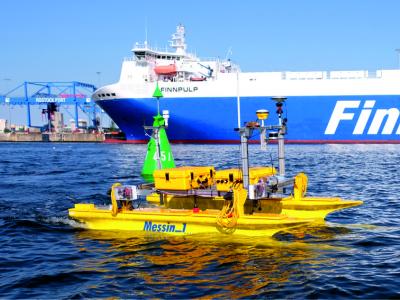Artificial Intelligence

This is a dataset regarding the creation of forgery images. The dataset consists of 1000 original and 3000 forgery images generated from the original images. The original images have been retrieved from publicly available repositories. Three different models have been used for creating the forgery images: cut-paste, copy-move, and erase-filling. Both pre-processing (sharpening, color enhancement, resizing, blurring, regulating exposure) and post-processing (sampling, rotation, masking) techniques have been considered for the generation of the forgery images.
- Categories:
 6829 Views
6829 ViewsThe measurement and diagnosis of the severity of failures in rotating machines allow the execution of predictive maintenance actions on equipment. These actions make it possible to monitor the operating parameters of the machine and to perform the prediction of failures, thus avoiding production losses, severe damage to the equipment, and safeguarding the integrity of the equipment operators. This paper describes the construction of a dataset composed of vibration signals of a rotating machine.
- Categories:
 2519 Views
2519 ViewsRemote imaging systems raise unprecedented challenges in artificial intelligence. The dataset provided (extracted from the SpaceNet 6 challenge) shows SAR images having distorted intensities (compared to the expected results, the latter being visible in the RGB and NIR images which are also provided) due to the geophysics of the SAR acquisition system and the geometries of ground objects. Can we teach an Artificial Intelligence to find the right re-projections for automatically correcting such distorted and compressed intensities ?
- Categories:
 228 Views
228 Views
This paper investigates the issue of generating multiple questions with respect to a given context paragraph. Existing designs of question generation (QG) model take no notice of intra-group similarity and type diversity for forming a question group. These attributes are critical for employing QG techniques in educational applications. This paper proposes a two-stage framework by combining neural language models and genetic algorithm for the question group generation task.
- Categories:
 97 Views
97 ViewsFecal microscopic data set is a set of fecal microscopic images, which is used in object detection task. The datasets are collected from the Sixth People’s Hospital of Chengdu (Sichuan Province, China). The samples were went flow diluted, stirred and placed, and imaged with a microscopic imaging system. The clearest 5 images were collected for each view of each sample with Tenengrad definition algorithm. The dataset we collected includes 10670 groups of views with 53350 jpg images. The Resolution of images are 1200×1600. There are 4 categories, RBCs, WBCs, Molds, and Pyocytes.
- Categories:
 659 Views
659 ViewsToday, the cameras are fixed everywhere, in streets, in vehicles, and in any public area. However, Analysis and extraction of information from images are required. Particularly, in autonomous vehicles and in smart applications that are developed to guide tourists. So, a large dataset of scene text images is an important and difficult factor in the extraction of textual information in natural images. It is the input to any computer vision system.
- Categories:
 896 Views
896 ViewsThis dataset consists of the training and the evaluation datasets for the LiDAR-based maritime environment perception presented in our journal publication "Maritime Environment Perception based on Deep Learning." Within the datasets, LiDAR raw data are processed using Deep Neural Networks (DNN). In the training dataset, we introduce the method for generating training data in Gazebo simulation. In the evaluation datasets, we provide the real-world tests conducted by two research vessels, respectively.
- Categories:
 1662 Views
1662 Views
This dataset contains a collection of videos consisting of satellite imagery augmented with 3D ship models, accompanied by the ships' corresponding AIS data. The intention of this dataset is for detecting dark ships, which are sea vessels acting maliciously, often while spoofing their AIS data. Multiple datasets exist that consist of satellite imagery of ships, however this dataset has the advantage of including each ships' corresponding AIS data. The simulated ships include both normal and anomalous behavior, whether the anomalous behavior is benign or malicious.
- Categories:
 466 Views
466 ViewsRecently, surface electromyogram (EMG) has been proposed as a novel biometric trait for addressing some key limitations of current biometrics, such as spoofing and liveness. The EMG signals possess a unique characteristic: they are inherently different for individuals (biometrics), and they can be customized to realize multi-length codes or passwords (for example, by performing different gestures).
- Categories:
 2762 Views
2762 Views





